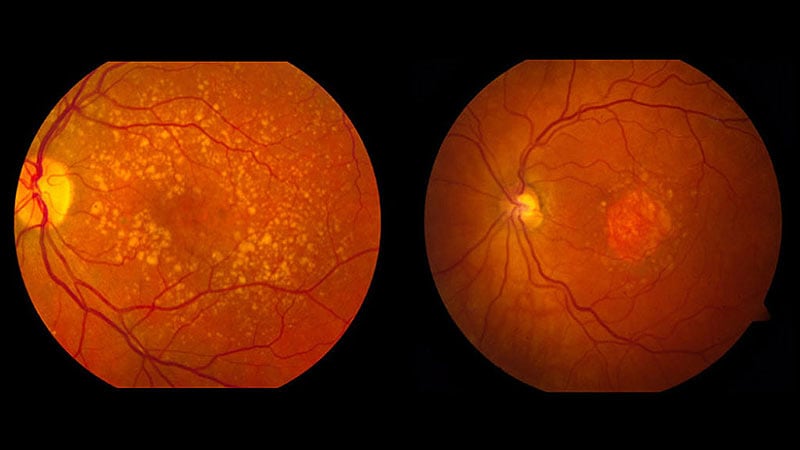TOPLINE:
Patients with diabetes using glucagon-like peptide 1 receptor agonists (GLP-1 RAs) may face more than twice the risk for developing neovascular age-related macular degeneration compared with those not using the medications, data from Canada showed. The risk appears to increase with longer exposure to the drugs.
METHODOLOGY:
- Researchers conducted a population-based, retrospective cohort study using administrative data for 139,002 patients aged 66 years or older in Ontario, Canada, from January 2020 to November 2023.
- The researchers matched 46,334 patients who had received a GLP-1 agent (predominantly semaglutide) for at least 6 months 1:2 with patients who had not received this type of medication, based on factors such as age, gender, duration of diabetes, and comorbidities.
- They examined the incidence of new diagnoses of neovascular age-related macular degeneration during 3 years of follow-up.
TAKEAWAY:
- Patients exposed to GLP-1 RAs showed a higher incidence of neovascular age-related macular degeneration than unexposed patients (0.2% vs 0.1%).
- Both unadjusted and adjusted Cox proportional hazard models estimated higher risk for neovascular age-related macular degeneration among patients exposed to GLP-1 medication (hazard ratio [HR], 2.11; 95% CI, 1.58-2.82; adjusted HR, 2.21; 95% CI, 1.65-2.96).
- In a sensitivity analysis, longer duration of exposure to a GLP-1 RA was associated with increased risk for neovascular age-related macular degeneration.
IN PRACTICE:
“GLP-1 RAs have had a tremendous role in the care of patients with diabetes and now those needing additional help with weight management. However, the adage that ‘there is no such thing as a free lunch’ remains true,” wrote Brian L. VanderBeek, MD, MPH, with the Scheie Eye Institute at the University of Pennsylvania Perelman School of Medicine, Philadelphia, in an editorial accompanying the study. “While certainly not outweighing the good these medications offer, prescribing physicians need to keep in mind the real and serious ocular adverse events that may occur.”
SOURCE:
Rajeev H. Muni, MD, with St. Michael’s Hospital in Toronto, Ontario, was the corresponding author of the study, which was published online on June 5 in JAMA Ophthalmology.
LIMITATIONS:
The analysis did not stratify results by the type of GLP-1 RA prescribed or consider dose, route of administration, or frequency of administration. The researchers had limited information about variables like smoking and sun exposure. “Further research is needed to determine if there is a true cause and effect relationship,” the study authors wrote.
DISCLOSURES:
Some of the researchers have received support from the Silver Target Foundation, the PSI Foundation, and Fighting Blindness Canada. Muni declared consulting for Alcon, Apellis, AbbVie, Bayer, Bausch Health, and Roche. His institution has received financial support from these companies.
This article was created using several editorial tools, including AI, as part of the process. Human editors reviewed this content before publication.
Source link : https://www.medscape.com/viewarticle/glp-1-ras-linked-doubled-risk-macular-degeneration-2025a1000f7q?src=rss
Author :
Publish date : 2025-06-05 15:00:00
Copyright for syndicated content belongs to the linked Source.
